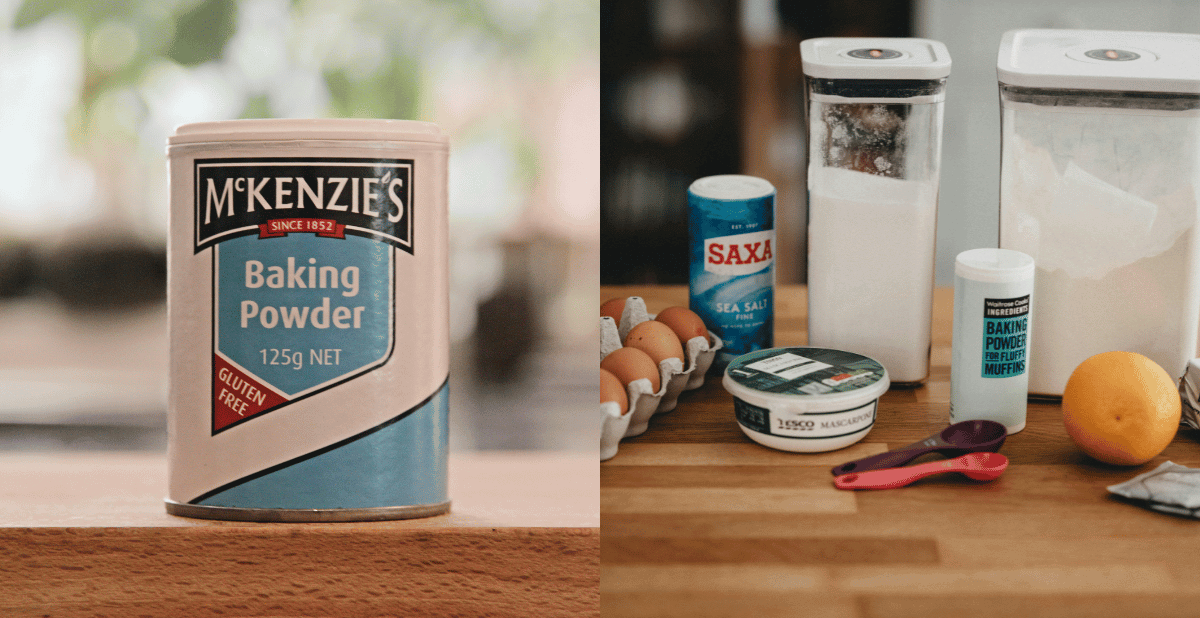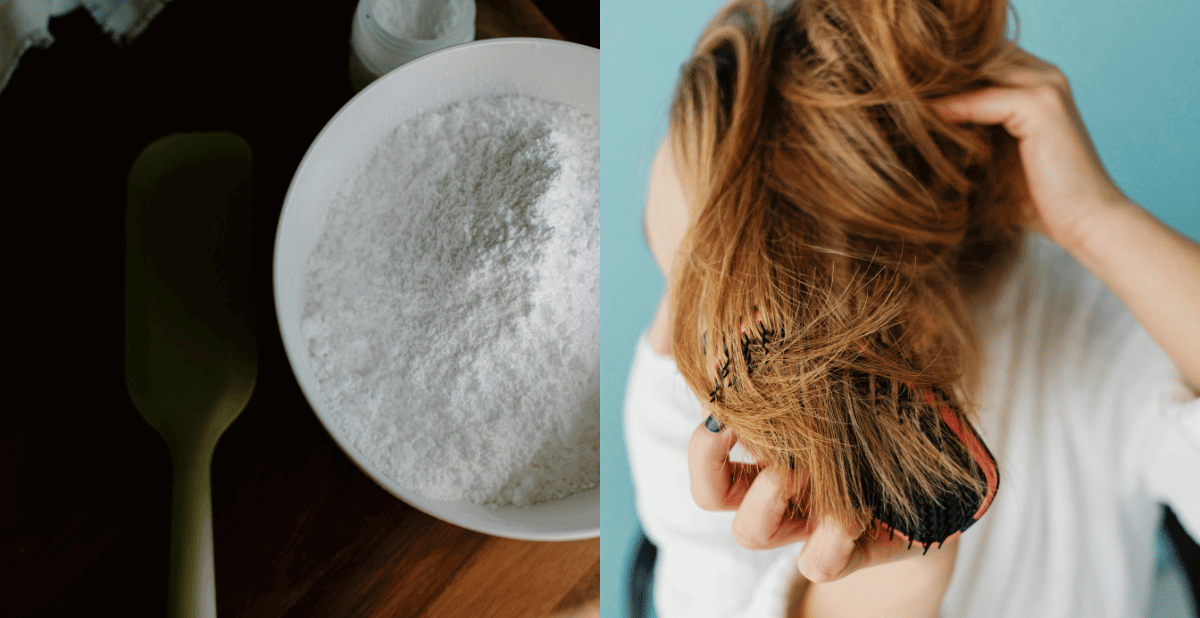Baking powder is a staple in many kitchens, especially for those who love to bake. It's a chemical leavener that helps dough rise, giving cakes and other baked goods a fluffy texture. But when a recipe calls for a specific amount, how many teaspoons in 8.1 oz baking powder?
Key Takeaways:
- Understanding the conversion between ounces and teaspoons is crucial for accurate baking.
- Baking powder is a chemical leavening that helps dough rise.
- Knowing the nutritional content of baking powder can help maintain a balanced daily diet.
The Importance of Accurate Measurements
Accurate measurements are crucial in baking.
Baking is a science unlike cooking, where you can often get away with a pinch of this or a dash of that.
The right amount of baking powder can make the difference between a perfectly risen cake and a dense, flat one.
Understanding Ounces and Teaspoons
To convert ounces to teaspoons, you need to know the density of the substance you're measuring.
For baking powder, 1 ounce is approximately equal to 6 teaspoons.
Therefore, 8.1 ounces of baking powder would be around 48.6 teaspoons.
Why Use Baking Powder?
Baking powder is a double-acting leavener, meaning it reacts twice: once when mixed with wet ingredients and again when exposed to heat in the oven.
This dual reaction helps ensure that your baked goods rise evenly and maintain their structure.
The Role of Baking Powder in Recipes
Baking powder is often used in recipes that don't contain acidic ingredients.
It provides the necessary lift to make baked goods light and airy.
For example, baking powder helps cupcakes rise and gives them a soft, fluffy texture.
Nutritional Content of Baking Powder
Understanding how much a nutrient contributes to your daily diet is essential.
Baking powder contains sodium, which is something to be mindful of if you're watching your salt intake.
Always check the product label for nutritional information.
Gluten-Free Baking Powder
Gluten-free baking powder is available for those with gluten sensitivities.
It performs the same function as regular baking powder but without the gluten, making it a first choice for gluten-free baking.
How to Measure Baking Powder
When measuring baking powder, using a proper measuring spoon and leveling it off with a knife is essential.
This ensures an accurate measurement, which is crucial for the chemical reactions that make your dough rise.
Baking Powder vs. Baking Soda
While both are chemical leaveners, baking powder, and baking soda are not interchangeable.
Baking soda requires an acidic ingredient to activate, whereas baking powder contains both an acid and a base, making it a complete leavening system.
Common Uses for Baking Powder
Baking powder is commonly used in cakes, muffins, and quick bread recipes.
It's also used in some cookie recipes to give them a lighter texture.
When combined with pure vanilla extract, baking powder can enhance the flavor of baked goods.
Storing Baking Powder
Store baking powder in a cool, dry place to maintain its effectiveness.
Exposure to moisture can cause it to lose potency, affecting the rise of your baked goods.
Baking Powder in Different Recipes
Different recipes call for varying amounts of baking powder.
For example, a recipe for purpose flour pancakes might require more baking powder than a recipe for cookies.
Always follow the recipe's instructions for the best results.
The Science Behind Baking Powder
Baking powder works by releasing carbon dioxide gas when it reacts with moisture and heat.
This gas forms bubbles in the dough or batter, causing it to expand and rise.
This is why mixing your ingredients thoroughly in a mixing bowl is essential to ensure even distribution.
Baking Powder and Sodium Content
Baking powder contains sodium, which can contribute to your daily sodium intake.
Look for low-sodium or sodium-free baking powder options if you're on a low-sodium diet.
Packaging and Shelf Life
Baking powder typically comes in a canister or a resealable bag.
Check the packaging for expiration, as expired baking powder may not work as effectively.
How to Test Baking Powder for Freshness
Mix a teaspoon of baking powder with a cup of hot water to test whether it is still active.
If it bubbles vigorously, it's still good to use. If not, it's time to replace it.
Baking Powder in Gluten-Free Recipes
Gluten-free recipes often rely on baking powder to provide the lift that gluten would typically offer.
To avoid any gluten contamination, make sure to use gluten-free baking powder.
Baking Powder and Balanced Diet
While baking powder is a small part of your overall diet, it's essential to consider how it fits into a balanced daily diet.
Be mindful of the sodium content and use it in moderation.
Baking Powder in Professional Baking
Professional bakers often use large quantities of baking powder.
Understanding the conversion between ounces and teaspoons can help ensure their recipes turn out perfectly every time.
Baking Powder and Food Allergies
Always check the product label for potential allergens if you have food allergies.
Some baking powders may contain corn starch, which can be an issue for those with corn allergies.
Baking Powder in Homemade Recipes
When making homemade recipes, measuring your baking powder accurately is essential.
This ensures that your baked goods rise correctly and have the right texture.
Baking Powder and Oven Temperature
Baking powder reacts to heat, so preheating your oven to the correct temperature before baking is crucial.
This ensures that the baking powder activates properly and helps your baked goods rise.
Baking Powder and Purpose Flour
When using purpose flour in your recipes, baking powder is often added to help the dough rise.
This combination is common in many baking recipes, from cakes to cookies.
Baking Powder and Cupcakes
Cupcakes rely on baking powder to rise and become fluffy. Make sure to measure your baking powder accurately to ensure that your cupcakes turn out perfectly.
Baking Powder and Serving Sizes
When calculating serving sizes, consider the amount of baking powder used in the recipe.
This can help you determine the nutritional content of each serving.
Baking Powder and Chemical Reactions
Baking powder causes chemical reactions that help the dough rise.
Understanding these reactions can help you become a better baker and achieve consistent results.
Baking Powder and Mixing Techniques
Proper mixing techniques are essential when using baking powder.
Make sure to mix your ingredients thoroughly to ensure even distribution and consistent results.
Baking Powder and Nutritional Labels
Always check the nutritional labels on baking powder packaging.
This can help you understand how much a nutrient contributes to your daily diet and make informed choices.
Baking Powder and Baking Soda Differences
While both are used in baking, baking powder, and baking soda serve different purposes.
Baking soda requires an acidic ingredient to activate, while baking powder contains both an acid and a base.
Baking Powder and Doughs Rise
Baking powder helps dough rise by releasing carbon dioxide gas.
This gas forms bubbles in the dough, causing it to expand and rise.
Baking Powder and Pure Vanilla Extract
When combined with pure vanilla extract, baking powder can enhance the flavor of your baked goods.
This combination is often used in cake and cupcake recipes.
Baking Powder and Balanced Baking
Using the right amount of baking powder is essential for balanced baking.
Too much or too little can affect the texture and rise of your baked goods.
Baking Powder and Daily Diet
While baking powder is a small part of your overall diet, it's essential to consider its nutritional content.
Be mindful of the sodium content and use it in moderation.
Baking Powder and Product Labels
Always check the product labels on baking powder packaging.
This can help you understand the nutritional content and make informed choices.
Baking Powder and Baking Techniques
Proper baking techniques are essential when using baking powder.
Measure accurately and mix thoroughly for the best results.
Baking Powder and Nutritional Content
Understanding the nutritional content of baking powder can help you maintain a balanced daily diet.
Be mindful of the sodium content and use it in moderation.
Baking Powder and Baking Success
Double-acting baking powder is like the superhero of the baking world.
Unlike regular baking powder, which gives you one burst of leavening power when it gets wet, double-acting baking powder works in two stages.
First, it starts reacting and creating bubbles when you mix it with your wet ingredients.
Then, when it gets heated in the oven, it gives you a second boost of leavening.
This two-step action ensures that your baked goods rise beautifully and have a perfect texture, making it a favorite among bakers who want consistent, reliable results every time.
It's like having a secret weapon in your pantry!
Until Next Time...
So, there you have it! Baking powder is a staple in many kitchens, especially for those who love to bake.
It's not just a simple ingredient; it's a magical chemical leavener that helps doughs rise, giving cakes, cupcakes, and other baked goods their light and fluffy texture.
Whether you're a seasoned baker or just starting out, understanding how to measure baking powder accurately can make all the difference in your culinary creations.
Food contributes so much to our lives.
Happy baking!
MommaPuff







